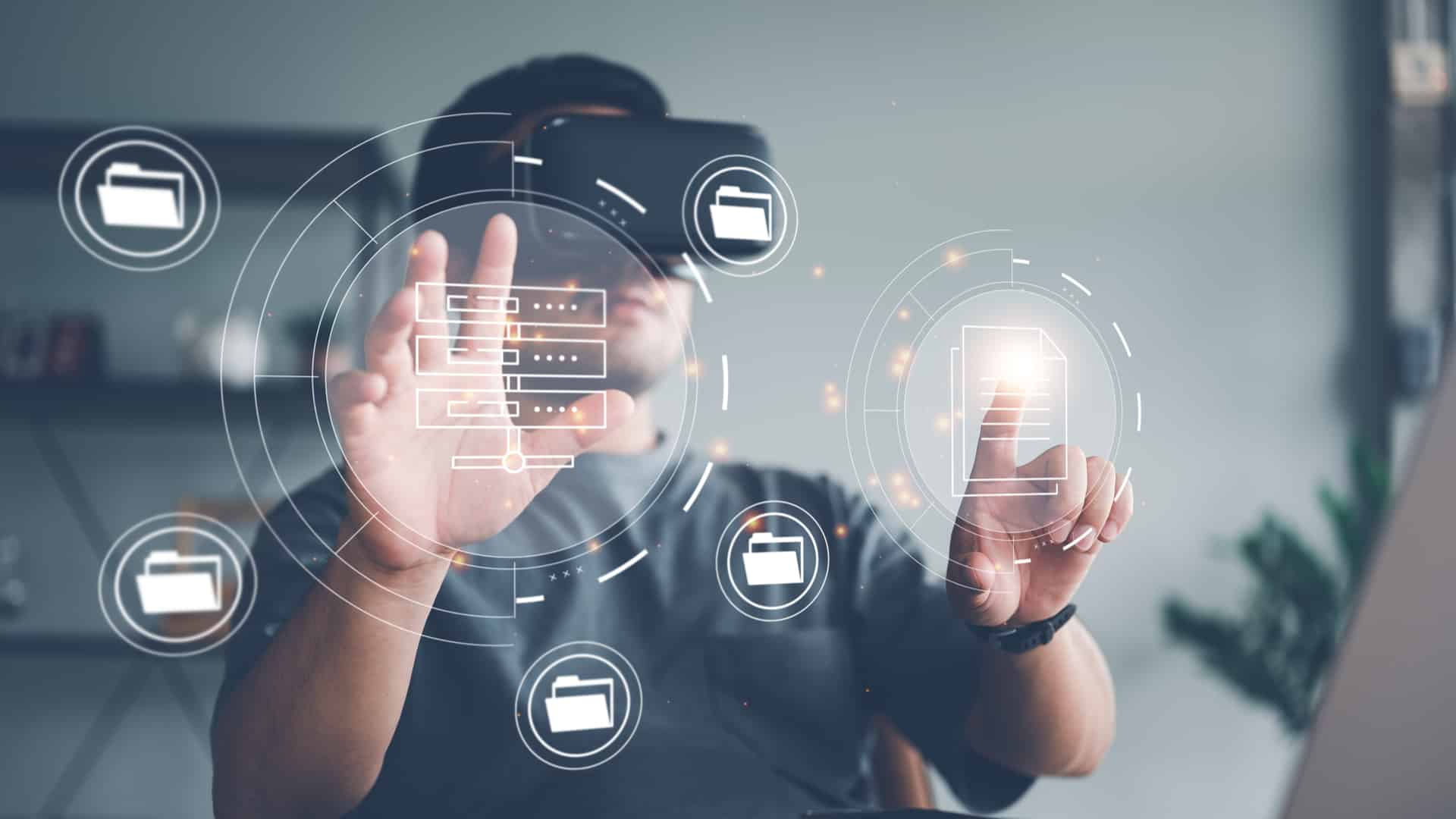
Processing…Please wait.
Search Engine Land » Channel » Content »
Virtual reality (VR) and augmented reality (AR) will impact the future of marketing.
Optimizing for the future of virtual marketing demands a name, which I am calling virtual environment optimization (VEO).
Today, we’re already starting to see the building blocks – and optimization potential – for this new technological world with the metaverse.
VEO is the task of working within a virtual environment and utilizing the resources available to best position the clients’ products and services within an alternative reality.
In search engine optimization (SEO), the focus is mainly on utilizing content, its best practices, and a slew of strategies to drive the clients’ website to the top of the search results. With the numerous changes in technology, it became necessary for SEO to adapt to areas such as voice search, map search, mobile search and much more.
Considering that there is another technology shift on the horizon with VR and AR, marketing will once again need to consider how clients’ products and services should be marketed in the metaverse or any virtual environment.
By coining the term VEO, we can start strategizing how to shift gears towards a more virtual environment for buying and selling products.
Get the daily newsletter search marketers rely on.
Processing…Please wait.
See terms.
Statistics indicate how VR and AR has progressed (and will continue to progress) over the next several years.
Currently, in listing the industries where VR is the most useful, marketing and advertising are listed at the bottom, with only 16%. This indicates that there is plenty of room for growth and improvement.
According to Finances Online, the top workforce development benefits of VR are as follows:
In just 2020 alone, the combined markets of AR and VR were worth approximately $12 billion. By 2024, it is projected to jump with a large annual growth rate of 54%, resulting in a valuation of $72.8 billion.
Retail is the sector that is projected to deliver the largest commercial investment in AR/VR technology in 2024, with $7.3 billion, according to the International Data Corporation (IDC).
According to pymnts.com, the home try-on effect will be eliminated by 25% from the benefit of virtual store implementation. As of now, the average e-commerce rate is 2%.
With the help of VR, consumers can be influenced by their purchasing decisions. So much so that for 2022, VR statistics show that VR adoption in e-commerce can boost online shopping conversions by 17%.
Regarding shopping online, 61% of consumers would rather shop with AR experiences, and 40% would likely spend more on customizable items through AR.
When looking at how trends may be leaning toward using VR and AR to boost the clients’ visibility, Google is a perfect example. Already Google has worked towards virtual products as early as 2013, with the creation of the Google Glasses.
More recently, they have developed the Google Lens, a vision-based computing capability that allows you to “search what you see.” Using your camera, Google Lens will compare the object in the picture to other images and rank them on similarity or relevance. For instance, if you use Google Lens on a product such as jeans or sneakers, Google Lens can provide more information on the product, including the results available to purchase the product.
As a result of the COVID-19 pandemic, online shopping saw a massive increase and changed the way people shop.
The commerce platform Kibo surveyed both millennials and Gen Z about their shopping habits. Out of both age ranges, 28% have admitted that they plan to continue online shopping even after the pandemic, as they prefer it over shopping in a physical store.
Lisa Kalscheur, Kibo’s CMO, claims that their research proves that people have started to move towards digital channels:
Age is not necessarily a factor in the desire for online shopping.
For millennials, 53% of individuals between 25-34 would prefer to find out information about a store online rather than asking the in-store staff for help. The younger generation commonly referred to as “Gen Z,” is extremely focused on online shopping. Gen Z is sustainability-minded and wants to change and update its style constantly. This has led to more non-traditional shopping styles, such as renting clothes.
CEO of Rent the Runway, Jennifer Hyman, commented on the younger generation:
Trends are shifting towards a world where we spend more time online and in VR than ever before. It’s only a matter of time before marketing and commerce penetrate this realm.
In some cases (Nike and Ikea), they have already ventured into this space.
We must consider these factors and prepare for the future ahead of time.
The Metaverse offers a great example of the future of VR and marketing.
Meta had already taken the initiative to help users monetize on products.
In Horizons World – the company’s social metaverse platform – it will start to test “in-world purchases,” allowing Horizon creators to sell virtual items to enhance the worlds they’ve created for users. In addition, Meta hopes to focus on ads in the future of Horizons Worlds.
Aside from Meta, we can look at real-world sectors for optimizing virtual environments:
Online grocery shopping has taken off, especially since the COVID-19 pandemic. A survey from eMeals indicated that 34% of individuals use delivery services to buy groceries online. CEO Forrest Collier said:
As a hypothetical example of VR grocery shopping, imagine virtually entering a Kroger’s. By putting on the VR headset and opening Kroger’s app, you would be transported into a virtual supermarket.
This virtual supermarket would be larger than any real physical store in the area and with much more inventory. As the user navigates through the store, they would be able to interact with the products –such as examining the packaging and nutrition panel and finally adding them to their cart.
Three students from UCLA conducted a study on VR and grocery stores. They attempted to draw as close of a parallel as possible to a traditional, in-store experience. They’ve imaged the following features using VR, with each step bringing the user to a more detailed viewing and interactive ability:
This then raises the question: how will marketers be able to compete for or determine who receives the “most visible” shelf space and placement of their product?
A virtual store equates to a much bigger inventory with more choices than ever before. The goal would be to ensure that the clients’ product gets more visibility rather than remaining “one in the crowd.”
The future of VR and AR in clothing stores could result in each brand eventually creating its own unique virtual retail outlet.
In a virtual setting, consumers would be able to explore an incredibly large inventory, filtering based on style, season, brand, size, etc. There may even be a “virtual mirror” to utilize, similar to MTailor’s custom tailoring services using AR.
In terms of marketing, retailers moving towards the VR environment would mean figuring out how to compete for mannequins, maximum shelf visibility, placement of popular brands, popular items, etc.
AR has already been implemented into the home goods sector. For example, an individual can use their phone to select items and test how they would appear in their home in real-time.
The benefit of VR marketing in a shopping environment is that groceries and all retailers will be able to save tremendous amounts of money by going virtual.
There will be the ability to cut down (or potentially even eliminate) the number of physical stores, necessary employees and all associated overhead.
In addition, there will be fewer brick-and-mortar stores, with large distribution centers for quick and easy delivery.
The phrase “content is king” has been used as a motivator for clients when planning content strategies for the creation of pages, blogs, videos, etc.
Now, as we start to enter a world of virtual reality, clients will have to shift to keep up with and produce virtual content where it is relevant.
Soon we will see Google begin indexing, crawling, and ranking web content based on the visual search results for AR-based content. As a result, SEOs will need to incorporate both augmented and virtual reality into their future content strategies.
Marketers will now need to devote more resources to visual content, such as infographics, videos and images. SEO-friendly content will make a client’s site more popular and help their visibility in the search results.
With augmented reality, customers would be able to go on a “virtual grocery store” shopping spree within a VR grocery retailer.
A virtual store is capable of housing more inventory than any brick-and-mortar location. It can be navigated and easily accessed by consumers.
Overall, enhancing your content with augmented reality and well-optimized content is a win-win for both the audience and search engines.
The benefit of AR is that both the brand and the customer provide content. This means consumers are more likely to participate in AR if they can add content in real-time.
As always, positive and engaging content is likely to have the greatest impact. As technology and trends continue to change over time, it is the responsibility of the marketing to shift their practices to stay up to date with the consumers’ needs.
VEO is coming. Will you be ready?
Opinions expressed in this article are those of the guest author and not necessarily Search Engine Land. Staff authors are listed here.
New on Search Engine Land
About The Author
Related Topics
Get the daily newsletter search marketers rely on.
Processing…Please wait.
See terms.
Learn actionable search marketing tactics that can help you drive more traffic, leads, and revenue.
August 16-17, 2022: Master Classes
Start Training Now: SMX Advanced
November 15-16, 2022: SMX Next
Discover time-saving technologies and actionable tactics that can help you overcome crucial marketing challenges.
Start Discovering Now: Spring (virtual)
September 28-29, 2022: Fall (virtual)
Protect Your Paid Advertising Spend Against Ad Fraud and Invalid Traffic
Build an Integrated Search Strategy Across Google, Amazon and YouTube
Get a Jumpstart with Google Analytics 4!
Enterprise SEO Platforms: A Marketer’s Guide
Enterprise Identity Resolution Platforms
Email Marketing Platforms: A Marketer’s Guide
Organic Search Industry Benchmarks
Receive daily search news and analysis.
Processing…Please wait.
Topics
Our Events
About
Follow Us
© 2022 Third Door Media, Inc. All rights reserved.
 #Bizwhiznetwork.com Innovation ΛI |Technology News
#Bizwhiznetwork.com Innovation ΛI |Technology News



